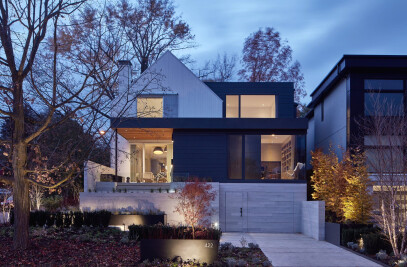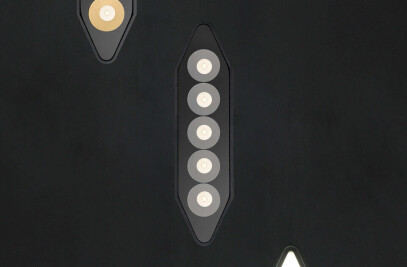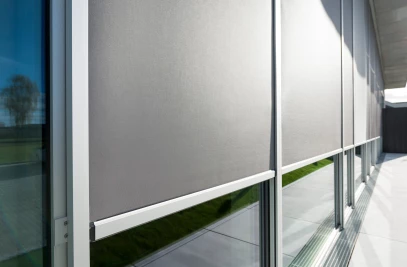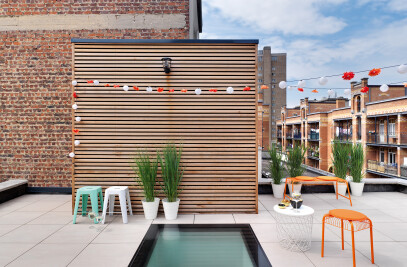A semi-detached home in Toronto's picturesque Little Italy neighbourhood once felt too small for its owners. Prior to the renovation, the homeowners’ ability to host dinner parties was limited due to size of the living, dining, and kitchen spaces; their extensive art collection was crowded and hidden by poor lighting, and narrow hallways and rooms inhibited even the size of furniture they could bring into the home. With a mere 13'-6” width, this downtown dwelling required two strategic additions and a gut renovation to make its narrow proportions feel spacious.



Organized like a passenger train—a versatile series of connected railcars—the new layout stretches each room or ‘car’ to the full width of the house with a slight compression only at transitions.


The first design intervention was to eliminate hallways and organize the functions as a series of spaces. The entry vestibule was moved, thanks to an addition, to be in front of the ‘Living car’, and not beside it. This new room allowed the living space to be a full 13'5" wide x 16' long, furnished with a sectional, armchair, and customized, built-in seats by a sculpted fireplace. A second addition was appended to the side of the kitchen to allow enough space for an island.




The second important design decision was to relocate the main staircase to a centralized location in the house and configure it as a switchback stair, instead of a linear one. This significantly reduced the amount of area needed for vertical circulation as well as horizontal, becoming a vertical link through the house. As a result, Railcar House feels generous and flows gracefully from one space to the next. Spaces are separated by sliding doors instead of swing doors, to reduce the circulation footprint, but also to allow for flexibility in use.


Art and lighting play a central role in the interior detailing of the home, along with furniture placement. Every work of art was strategically placed on walls to either balance the heaviness of large furniture or offset with brightness and colour. Some spaces were given moodier, contemplative lighting and colours, while others required lighter, softer tones. Each wall surface in this house further supports the function of each ‘car’ or denotes a transition space. Colour, material textures, and lighting were used to create an appropriate backdrop for cherished artworks, and to enhance the livability of the home.



This architectural strategy was also applied to the landscape design surrounding the house. The front wall of the house became a continuation of the garden, and continued again with the rear dining and sitting areas. The bold green-black walls of the front and rear rooms of the house allow the walls to recede from our perception, while the more vibrant colours of the Japanese Maple and exterior landscaping elements fill the space instead. Completed in 2024, Railcar House is a lively home that offers a comfortable and joyful sanctuary for its always-on-the-move owners.























































